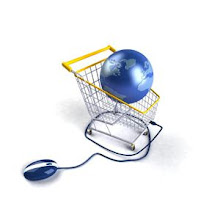 Phishing is an online fraud technique used by criminals to entice the people to share their confidential information such as account passwords, credit-card numbers or other information. It is also known as “carding” and “spoofing”. Phishing is the most powerful online crime method used by criminal for stealing personal finance information and perpetrating identifies theft.
Phishing is an online fraud technique used by criminals to entice the people to share their confidential information such as account passwords, credit-card numbers or other information. It is also known as “carding” and “spoofing”. Phishing is the most powerful online crime method used by criminal for stealing personal finance information and perpetrating identifies theft.Normally, Phishing is happens from social networking website, a fake website that accepts donation for charity and etc. It is normally carried out by e-mail messages, instant message program, spam and etc.
The following are some of the examples of Phishing:
1. This is an example of what a phishing scam in an e-mail message might look like.

Phishing (email scams) always includes official-looking logo and it will try to convince you to divulge the details about your confidential information on to their fraudulent websites.
2. This is an example of what a phishing website might look like.


How do we know if this is a legitimate bank website or fake website? The first indication is the slightly illogical problem that they are trying to persuade you to solve the problem: “some of our members no longer have access to their email addresses and we must verify it”. The second tip-off is that the address is supposedly secure (using the https:// notation), but there is no padlock icon in the bottom right hand corner of the browser window. Finally, the Address Bar is a fake. The website operator has turned off the address bar. Turning it back on using View, Toolbars, Address Bar reveals the proper address like this:

How can you protect yourself from Phishing:
1. Never reply to e-mail messages that request your personal information
Be aware of the e-mail message from the person that asks for your confidential information- or one that asks you to send your confidential information for updating.
2. Make sure the Website uses encryption
The Web address should be preceded by https:// instead of the usual http:// in the browser's Address bar. Before submitting financial information through a Website, you must look for the "lock" icon on the browser's status bar. It means your information is secure during transmission.
3. Don't click links in suspicious e-mail
Don't click a link contained in a suspicious message because the link might not be trustworthy.
4. Use strong passwords and change them often
Use the strong passwords combine uppercase and lowercase letters, numbers, and symbols, which make the criminals difficult to guess. Besides, also can use different password for each of your accounts and change them frequently.
5. Do business only with companies you know and trust
Use well-known or established companies with a good reputation for quality service. A business Website should always have a privacy statement that specifically states that the business won't pass your name and information to other people.
6. Help protect your PC
Keep your PC updated & use antivirus software and firewall.
7. Monitor your transactions
You might use just one credit card for online purchases to makes it easier to track your transactions.
8. Use credit cards for transactions on the internet instead of debit cards to avoid the big credit limit from your bank account.
9. If you are uncertain about the information, contact the company through an address or telephone number you know to be genuine.
10. If you unknowingly supplied personal or financial information, contact your bank and credit card company immediately.



No comments:
Post a Comment